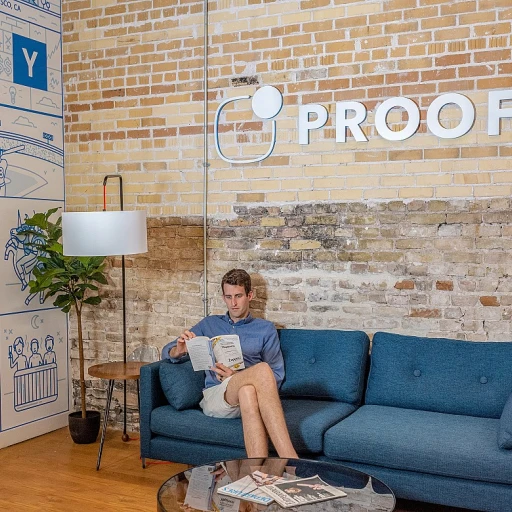
Understanding California's Maternity Leave Laws
Defining the Scope of Maternity Leave
In California, understanding the legal framework surrounding maternity leave is crucial for UK office managers overseeing employees who work remotely from this region. It is important to comprehend the distinct laws and benefits that apply, which are notably different from those in the United Kingdom. Key Components of California Maternity Leave Laws California offers a comprehensive set of maternity leave laws designed to support pregnant employees and new parents. These laws provide eligible employees with various forms of leave and benefits ensuring job protection and income support during a critical life stage.- Pregnancy Disability Leave (PDL): Under California law, employees who are disabled by pregnancy, childbirth, or a related medical condition are entitled to up to four months of unpaid, job-protected leave. During this period, they may also be eligible for state disability insurance, which offers partial wage replacement.
- California Family Rights Act (CFRA): This act offers eligible employees up to 12 weeks of unpaid leave for the birth of a child or to bond with the new child. Importantly, this leave provides job protection and continuation of company health benefits.
- Paid Family Leave (PFL): While the CFRA and PDL offer unpaid leave, the PFL program provides eligible employees with partial wage replacement for up to eight weeks while on leave. It is funded through employee-paid state disability insurance contributions.
Comparing UK and California Maternity Leave Policies
Maternity Leave Entitlements: A Comparison
When considering maternity leave for eligible employees in both the UK and California, it's crucial for office managers to understand key differences in benefits and duration. California offers a more complex system compared to the UK's more straightforward approach. In California, maternity leave can be a combination of pregnancy disability leave (PDL), the California Family Rights Act (CFRA), and the Paid Family Leave (PFL) program.
The UK provides up to 52 weeks of maternity leave, with the first 39 weeks being paid. Employees can receive Statutory Maternity Pay (SMP) or Maternity Allowance, which offers a financial safety net. In contrast, California's system functions on wage replacement through state disability insurance and PFL, offering up to 60-70 percent of an individual's wages, contingent on their prior earnings.
Eligible Californian employees can take up to four weeks of pregnancy disability leave before the birth of a child and continue on PDL for up to four months thereafter, based on medical necessity. Post-delivery, the CFRA provides additional entitlement to family medical leave for bonding with the child. This ensures job-protected leave while receiving wage replacement benefits through PFL.
While both regions aim to support famiilies during critical periods, the UK prioritizes longer duration, whereas California combines multiple leave types with partial pay. Understanding these differences helps in making informed decisions about managing employee benefits and family rights during maternity leave.
Step-by-Step Guide to Applying for Maternity Leave in California
Steps to Secure Maternity Leave in California
To navigate the application process for maternity leave in California, office managers need a well-structured approach ensuring that eligible employees understand their rights and benefits. Here’s a detailed guide:- Eligibility Check: Begin by confirming that the employee is eligible for maternity leave under both the California Family Rights Act (CFRA) and the Pregnancy Disability Leave (PDL). Eligible employees must have worked at least 1,250 hours in the past 12 months and be employed by a company with 5 or more workers.
- Understanding the Benefits: Employees can access various benefits including PDL for pregnancy-related medical leave and Family Medical Leave (FML) under CFRA which offers job-protected leave. Additionally, California provides Paid Family Leave (PFL) which offers partial wage replacement during leave.
- Application for Disability Insurance: Direct the employee to apply for State Disability Insurance (SDI) as early as nine weeks before the expected delivery date. This benefit compensates for lost wages (disability leave). The application can typically be completed online and requires medical certification.
- Coordinating with Paid Family Leave: After the disability period ends, eligible employees can transition to Paid Family Leave for bonding with the new child. This requires submission of a claim to the Employment Development Department (EDD) with proof of the child's birth.
- Informing About Health Benefits Maintenance: Ensure that the employee is aware that health benefits will continue under the same conditions as if they were working, provided they pay any required contributions.
- Employees' Notice Requirement: Encourage employees to notify their supervisors at least 30 days in advance, whenever possible, to allow planning adjustments. However, it's understood that this isn't always possible due to medical emergencies or unforeseen circumstances.
- Documentation and Records: Keep comprehensive records of all communication and documentation filed. This will help in managing both the employee’s expectations and company compliance.
Supporting Employees During Maternity Leave
Providing Support During Maternity Leave
As an office manager in the UK assisting employees navigating maternity leave in California, it is essential to ensure that support mechanisms are in place for your team members during this significant transition. The California Family Rights Act (CFRA) and the Pregnancy Disability Leave (PDL) offer job-protected leave, and it's crucial to respect these rights by maintaining open communication and offering unwavering support. Start by guiding your eligible employees through their rights under various California leave entitlements including CFRA, PDL, and the Paid Family Leave (PFL) program. These are designed to offer financial assistance like wage replacement and protect their job while they’re on leave. Consider setting up regular check-ins with employees on maternity leave to address any concerns regarding their return to work or health benefits. This gesture not only reassures employees of their job security but also shows them that their wellbeing and their new family's are top priorities. Providing resources and access to necessary benefits such as disability insurance and family medical leave can significantly ease the burden on your employees during this time. By ensuring they have direct access to these benefits, you alleviate their administrative strains and allow them to focus on their health and their child. Your role is also to foster a workplace environment that acknowledges family commitments. Encourage parental engagement, provide flexibility where feasible, and advocate for paid leave policies that complement California family leave frameworks. Creating a supportive and inclusive family culture means being approachable and facilitating dialogue, which breeds loyalty and productivity when employees are balanced between their personal and professional lives.Managing Workload and Resources During Employee Absence
Ensuring Continuity in the Workplace
Effectively managing workload and resources during an employee's maternity leave is crucial for maintaining productivity and supporting your team’s well-being. Balancing the demands of work with the rights of employees under California's comprehensive leave laws, such as the California Family Rights Act (CFRA) and Pregnancy Disability Leave (PDL), requires thoughtful planning and a clear understanding of eligibility criteria. Consider these strategies to manage the transition smoothly:- Assess Workload Requirements: Before the employee goes on maternity leave, review their core responsibilities and identify essential tasks that require delegation. Determine which tasks other team members can handle and where temporary support might be necessary.
- Plan for Temporary Staffing: If the workload exceeds the team’s capacity, consider hiring temporary staff or reallocating resources within your team. Temporary employees can cover vital roles, ensuring that essential job functions continue without interruption.
- Leverage Flexible Work Arrangements: Encourage flexibility within the team where possible. This might include adjusting schedules or allowing remote work to manage the increased workload more effectively.
- Implement Knowledge Transfer Protocols: Arrange for a comprehensive handover before the employee's leave. Documentation of key processes and tasks is vital for ensuring continuity and should include step-by-step guides to facilitate seamless transitions.
- Maintain Communication Channels: Regular communication with the team can brace for the impacts of absent staff. Make sure everyone understands the scope of their additional responsibilities. Open discussions ensure clarity and support among employees.
- Focus on Employee Well-being: Remember, applying strategic plans does not only reflect on improving productivity. Keeping a focus on your team’s health benefits will enhance their engagement and satisfaction, creating a more supportive workplace.
Creating a Family-Friendly Workplace Culture
Fostering a Supportive Environment
Creating a family-friendly workplace culture is essential for supporting employees during significant life events, such as maternity leave. This involves understanding and respecting the rights and needs of employees, as outlined in both UK and California maternity leave policies. By fostering a supportive environment, companies can enhance employee satisfaction and retention.
Implementing Flexible Work Arrangements
Offering flexible work arrangements can significantly benefit employees returning from maternity leave. Consider options such as remote work, flexible hours, or part-time roles to accommodate the needs of new parents. This flexibility not only aids in balancing work and family life but also demonstrates the company's commitment to employee well-being.
Providing Comprehensive Benefits
Ensure that employees are aware of the benefits available to them, including paid family leave, state disability insurance, and other health benefits. Clear communication about these benefits helps employees feel secure and valued, knowing that their needs are prioritized during pregnancy and parental leave.
Encouraging Open Communication
Open communication is key to maintaining a supportive workplace culture. Encourage employees to discuss their needs and any concerns they may have regarding their leave or return to work. This dialogue can help address potential issues early and ensure a smooth transition for both the employee and the company.
Promoting Work-Life Balance
Promoting a healthy work-life balance is crucial for a family-friendly workplace. Encourage employees to take advantage of their entitled leave, such as pregnancy disability leave (PDL) and California Family Rights Act (CFRA) leave, without fear of job repercussions. This approach not only supports employees' personal lives but also enhances their productivity and job satisfaction.













